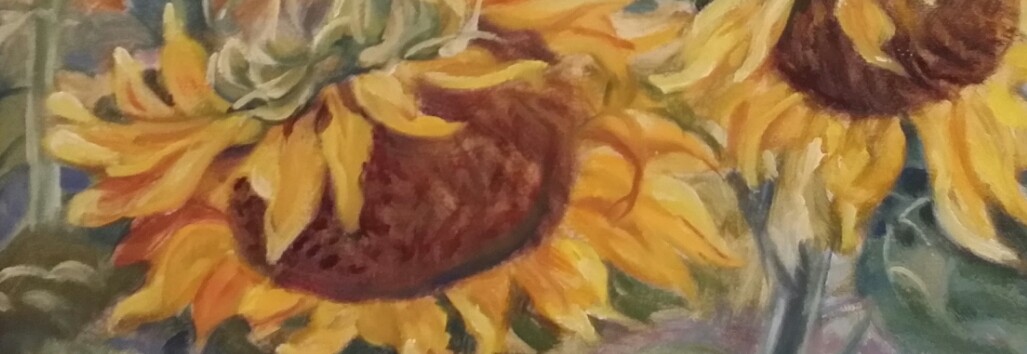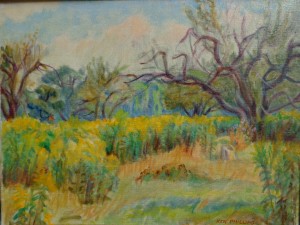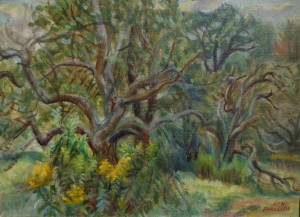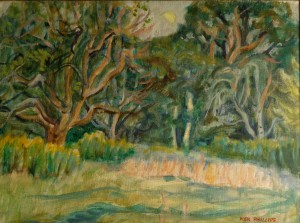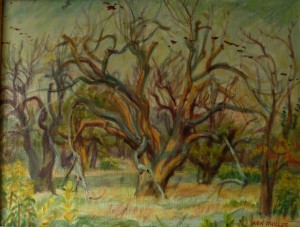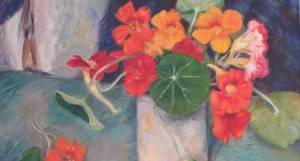When my artist parents bought their land on Harborn Trail (then Harborn Road) in 1939, it was surrounded by several fine orchards with magnificent, tall, spreading apple trees. These orchards gave them joy in every season, and often appeared in their pictures. However, over the years they lived there, one by one these trees were torn up and the trees were replaced with subdivisions,
By the time my father retired only one small orchard remained, living on borrowed time. My father felt his world was being assaulted from all sides. He was watching the surrounding woods and fields disappear with dismaying speed. Thanks to early retirement from his day job at Simpson’s advertising department he was free at last. But free to do what? With time to reflect he faced straight into the teeth of old age.
Panicky, despairing, he feared that the long-awaited opportunity to paint at will had come too late for him. Wrestling with complicated new glasses, fumbling to sketch with arthritis-twisted fingers, daily wracked by pain and in an agony of despair, my father had lost all hope for himself and his art. As he struggled to regain hope, he turned to the style of his favourite Group of Seven teacher, Arthur Lismer.
That autumn, when he heard that the last orchard, with its dying, uncared-for trees, was doomed he stumbled down there every day to paint his most elegaic tribute. As he did so, I believe he wrestled with his despair for the orchard and himself.
- Nothing Gold Can Stay
- Into the Woods
- The Waning Moon
- The Ruined Orchard
